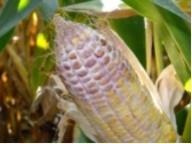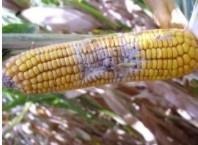By Augustine Obour and Logan Simon et.al
Introduction
- Integration of cover crops (CCs) into no-till (NT) crop production has been recommended to regenerate soil properties degraded after many years of conventionally tilled, low-intensity cropping systems in the central Great Plains.
- Potential benefits of adopting CCs in NT cropping systems of west central Kansas include improved soil health through increased soil organic carbon, reduced compaction, enhanced soil nutrient cycling, as well as improved structure and water infiltration.
- Subsequent crop yields following CCs have been mixed, with CCs having either no effect or reducing yields in drier years in water-limited environments. This yield penalty presents a major barrier to adoption of CCs in the region.
- Value through grazing CCs may offset losses in subsequent crop yield in order to balance the goals of profitability and maintenance of soil health in dryland cropping.
- Concerns regarding grazing CCs include reduced SOC accrual, increased soil compaction, and degraded soil structure with grazing, especially in NT production systems.
Objective
- To investigate CC grazing impacts on residue return, soil bulk density, aggregate stability, pH, and soil nutrient concentrations on producer fields in west central Kansas.
Procedures
- Field experiments were conducted on two cooperative producer fields, one in central KS and one in western KS during the 2018-19 growing season. The experiment was repeated on a different field in central KS for the 2019-2020 growing season.
- The fields in central KS were managed under a NT rain-fed wheat-wheat-soybean (2018–2019) or wheat-sorghum-soybean (2019–2020) rotation. A winter CC mixture of triticale/rapeseed/radish was planted in the fall following the wheat phase ahead of soybean or sorghum in each rotation. The site in western KS was managed under a NT dryland wheat or triticale-sorghum-fallow rotation.
- The experiments at each study location had two treatments, grazed CCs and non-grazed CCs, in four replicated strips (Figure 1).
- Cover crop grazing at central KS location in the 2018–2019 growing season occurred from December 17, 2018, through February 10, 2019, at a stocking rate of 5.4 animal unit months (AUM) per acre for 55 grazing days. Again, in 2019–2020, heifers grazed CCs from January 9 to February 17, 2020 with a stocking rate of 4.2 AUM/a for a total of 39 grazing days. At the western KS site, CC grazing spanned from August 24 to October 10, 2019, for 48 grazing days using lactating cows at a stocking rate of 5.2 AUM/a.
- Prior to grazing, CC biomass was collected, weighed, and dried to determine dry matter (DM). After termination, grazed and non-grazed CCs were sampled and DM was determined.
- Soil samples were collected for the analysis of soil chemical and physical properties (bulk density, aggregate stability, pH, and available nutrient concentrations) from the grazed and non-grazed CCs in the spring of 2019 and 2020 after termination of CCs. Additional soil samples were taken from adjacent native perennial grass pastures in 2020 to compare soil properties to the CC treatments.

Figure 1. Grazed cover crops (left) and ungrazed cover crops (right). Photo by Logan Simon, K-State Research and Extension.
Results
- In general, CC biomass post-grazing was less than non-grazed CCs. Averaged across sites, pre-grazed CC biomass was not different from post-grazed though both were less than the non-grazed CCs (Figure 2). This occurred because the annual grass CC species used in this study had significant regrowth after grazing, which resulted in additional growth to compensate for biomass removed by cattle consumption and trampling.
- Post-grazed CC biomass averaged 2650 lb/a compared to 3741 lb/a for the non-grazed treatment. This suggests that approximately 71% of the total available CC biomass produced was retained as residue on the soil surface after grazing.
- Soil bulk density under grazed CCs was not different from the non-grazed CC treatment (Table 1). Bulk density was different (P < 0.001) among CCs and pasture (Table 1), possibly due to the remnant effects of past tillage operations before conversion to NT, as well as the differences between temporary annual and permanent perennial rooting systems.
- Cattle grazing CCs had no negative effect on soil pH compared to the non-grazed treatment. The SOC concentration was not different between grazed or non-grazed CCs in this study. Across depths, SOC averaged 1.55% for grazed and 1.70% for non-grazed CCs, and both were less than that measured under pasture (Table 1).
- Soil fertility indicators including N, P, Fe, Mn, Zn, and Cu concentrations were unaffected by cattle grazing CCs compared to the non-grazed treatment.
Table 1. Soil physical and chemical properties in the 0- to 6-in. soil depth as influenced by cover crop management: no-till grain-based cropping systems with grazed cover crops, non-grazed cover crops, and perennial pasture
Soil property | Cover crop management |
Grazed cover crops | Non-grazed over crops | Pasture |
pH | 5.62 | b† | 5.76 | b | 6.71 | a |
Bulk density (g cm-3) | 1.35 | a | 1.31 | a | 1.20 | b |
Total N (%) | 0.15 | c | 0.17 | b | 0.23 | a |
SOC (%) | 1.55 | b | 1.70 | b | 2.36 | a |
NO3-N (ppm) | 7.1 | a | 6.1 | a | 1.1 | b |
NH4-N (ppm) | 13.8 | a | 18.0 | a | 11.4 | a |
P (ppm) | 48.2 | a | 46.6 | a | 13.4 | b |
Zn (ppm) | 0.79 | a | 0.95 | a | 1.18 | a |
Fe (ppm) | 56.8 | a | 53.3 | a | 33.4 | b |
Mn (ppm) | 60.8 | a | 58.4 | a | 37.9 | b |
Cu (ppm) | 1.3 | a | 1.3 | a | 1.0 | b |
Large macroaggregate (%) | 29.2 | b | 32.2 | b | 68.9 | a |
Small macroaggregate (%) | 43.1 | a | 43.4 | a | 21.8 | b |
Microaggregates (%) | 27.7 | a | 24.5 | a | 9.3 | b |
MWD (inch) | 0.050 | b | 0.051 | b | 0.148 | a |
†Means in a row followed by different letters indicate significant differences among cover crop management treatments at α < 0.05.

Figure 2. Cover crop productivity pre-grazing, post-grazing, and non-grazed, averaged across site-years. Means across are averaged across 4 replications and 3 sites (n = 12). Different letters atop bars indicate significant differences among pre-graze, post-graze, and non-grazed cover crop biomass at α < 0.05. Error bars represent standard error.
Take-home message
- Careful grazing of CCs as done in this study could leave adequate residue cover to protect the soil and meet soil health goals.
- Grazing of CCs is a viable management option to intensify NT crop production to improve soil health and maintain or increase overall system profitability.
- Further research will be needed to determine the long-term effects of CC grazing in NT production systems.
Source : ksu.edu